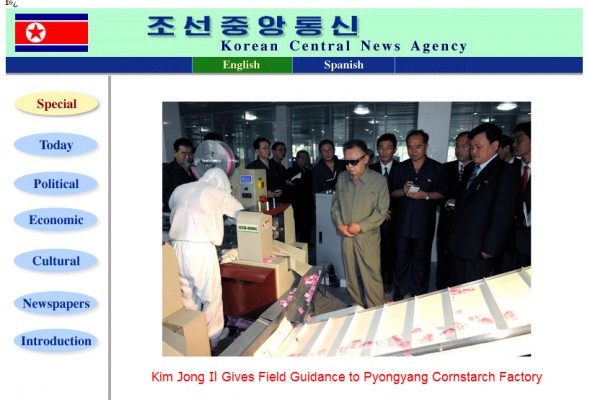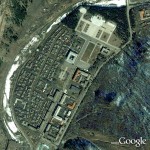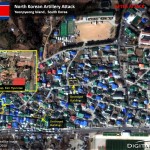UPDATE 4 (12/6/2010): Martyn Williams informs us that the new KCNA web page has undergone a second round of changes:
Also new is the addition of Korean-language articles to the previously-available English and Spanish news.
The front page includes an image, the day’s headlines and links to seven category menus. I had problems with some of the links and the menus when accessed via Firefox, but they function with Internet Explorer.
It still has to be accessed via an ugly all-numeric address but new is a copyright line that states:
Copyright © 2000-2010 by www.star.edu.kp all rights reserved.
This is the first time I’ve seen the name “www.star.edu.kp.” The Star could refer to “Star JV,” the DPRK-Thai joint venture that runs the North Korean IP address space. That company is planning to use “www.star.net.kp” for it’s own homepage. But the “edu” typically signifies an educational domain.
At present all KP domain names remain offline. The German server that was responsible for serving the dot-kp top-level domain has been offline for several months.
Because this is the second of an unknown number of versions, I will call this “new KCNA v2.”
Below is a screen shot of the original version:
Photo from Martyn Williams
UPDATE 3 (10/21/2010): Martyn Williams reports that the South Korean government is now blocking the new North Korean web pages.
Internet users in South Korea had been able to access the website earlier this week, but as of Thursday attempts to connect are redirected to a National Police Agency page that warns the site’s content is prohibited in South Korea.
The blocking isn’t a surprise. About 30 Web sites with North Korean connections have been blocked for several years by the South Korean government. They include a similar site operated from Tokyo that, like the new site, carries news in English and Spanish from the official Korea Central News Agency (KCNA).
UPDATE 2: More in the comments.
UPDATE 1: You can see the new KCNA here (hat tip to “PR”).
ORIGINAL POST: Martyn Williams writes in Computer World:
North Korea appears to have made its first full connection to the Internet. The connection, planning for which has been going on for at least nine months, came as the reclusive country prepares to mark the 65th anniversary of the founding of the ruling Workers’ Party of Korea with a massive celebration and military parade.
The site appeared as Pyongyang welcomed foreign journalists to the city to observe Sunday’s parade. A press room for the journalists was set up at the Koryo Hotel and reporters were given full access to the Internet. Typically visitors to Pyongyang are only able to make telephone calls or send e-mails through designated computers.
“The North Korean IT guys at the press room really know their stuff. We’re logged on,” wrote Melissa Chan, a correspondent for Al Jazeera, in a Twitter message.
She later appeared live on the channel via a Skype link.
“We have access to Facebook, Twitter and here I am able to Skype with you,” she said.
The access is extraordinary for a country that keeps such tight control on how its citizens communicate.
While Internet access is believed to be available to small group of elite members of the ruling party, the rest of the country is not permitted access to outside sources of news.
Radios are pre-tuned to state broadcasts, magazines and newspapers from other countries are banned and the only Web access available is to a nationwide intranet that doesn’t link to sites outside of the country. As PCs are unusual at home, most access is via terminals in libraries.
The numeric IP addresses lie at the heart of communication on the Internet. Every computer connected to the network needs its own address so that data can be sent and received by the correct servers and computers. Without them, communication would be impossible.
Frequent monitoring of the addresses by IDG News Service repeatedly failed to turn up any use of them until now.
An analysis of the connection to the news agency Web site shows it is connected to the wider Internet via China Netcom.
It’s impossible to tell if the access given to journalists in Pyongyang marks a turning point in the way the country regulates access to communications, or if it’s simply a courtesy made available to create a good impression among journalists.
The founding anniversary of the Workers’ Party of Korea is a big deal for the country every year, but this year is especially important. Kim Jong Eun, son of leader Kim Jong Il, has just taken his first position within the party, which rules North Korea. His appointment to the party’s Central Committee and the Central Military Commission are first steps towards a likely future position as leader of the country.
I have had a hard time locating the new web page (Google has not scraped it), but I will post it here soon.
The KCNA site run by the Chongryon in Japan is here. The new version also seems to offer both English and Spanish versions.
Read more here:
North Korea opens up Internet for national anniversary
Computer World
Martyn Williams
10/9/2010
…and Martyn’s personal web page: http://www.northkoreatech.org/



